Chris Hector interviews Johan Hamminga
Photos: Arnd Bronkhurst
I was in a bit of a quandary going into my interview with Johan Hamminga. It was Johan who brought Adelinde Cornelissen and Parzival to the top, preparing them for their sensational debut on the international stage, Aachen 2008, when Adelinde, still at the time a school teacher and a hobby rider, beat all the top combinations at the famed CHIO, save one, Isabell Werth and Satchmo. It was Parzival’s first big competition outside the The Netherlands in what was only his second season on the big tour.
Suddenly Adelinde had quit teaching and was in the front line of the Dutch dressage team, and with that came the team coach, Sjef Janssen, and the beginning of the downhill slide. Sure, the pair may have won medals and fame, but on each appearance the big chestnut looked tenser, crossing his jaw, exposing his rather blue tongue, and the rider adopted a defensive stance, leaning back in the saddle, hanging onto the reins in a death grip. Success had come at a huge price, the bubbly blonde looked as tense as her horse.
When Sjef cut back on his teaching duties and resigned as the team coach, Adelinde went back to Johan, and at the European Championships in Herning, you could see the difference, the rider sitting more upright, the gelding looked softer and more relaxed, but this was a matter to be approached tactfully in my interview after the team Grand Prix.
Would Mr Haminga be ready to talk about Sjef’s training and the changes he had made to repair the damage?
I opened with a very vague question about dressage in general at the Championships, but Johan jumped straight in:
“What did you think about the chestnut today?”
I remarked that I thought Parzival was much better, much softer, and Adelinde seemed to be sitting better…
“Yes the rider was in better balance, she was soft with the reins and the horse is better in the neck, longer in the neck, the poll is the highest point with the nose on the vertical – he is closing his mouth, and he is in balance. You see it especially in the transition to piaffe, he is so easy in piaffe with such a good transition. This is the reason to look to see that you are riding in a good balance, when the horse is in good balance, then he can move so fluently into the piaffe; he can easily go into the piaffe and easily come out. Horses that are not in balance cannot come in, and cannot come out.”
“Up till now, Adelinde has not trained so much because of the injury to his heart but now we can build it up, and when we saw the test today, we are on the right way I think.”
“When you are in the dressage sport and you are out of the competition for half a year, then there is a little problem, you are out of the sport but it is growing up and growing up, you are staying on the same level and the others are going forward and forward, and you have to hurry to catch up.”
What work did you do with Parzival to get him soft again?
“We have done a lot of walk, making him looser, bending him. It is very important that the horse is listening to your aids. If you use your legs and the horse is running away, then you have to pull. We had to work a lot so that the horse is waiting on the half halts, when the horse is waiting on your half halts, then you can come with your legs, that makes the horse rounder, better in his conformation and better in his balance. There are some moments when he wants to go forward too much, but now in the corner on the short side, she can pick him up and make him more collected. You can see now that on both hind legs he is the same, and the hocks are under him, and that is the reason the horse is better in balance and he is loose on both reins and can use his whole body.”
Did the rider’s position come to the vertical with the change of balance of the horse? Or did the horse change his balance when the rider came to the vertical?
“When the horse is not carrying his weight, then the rider is going back with strong reins. When the horse carries more, when you develop more engagement, then the rider is in a normal, balanced position and is very soft on the reins. Then horse can come up in the wither and the hind legs are carrying more weight and the rider can sit in the right position.”
You must have felt good, sitting in the stand at the Europeans, and seeing the changes…
“Of course, we tried to do our best – I had to change the training session because two years ago Adelinde was training with Sjef, and it was also on a high level, but the horse became a little bit stiff, now there is more swinging, there is more harmony, and the horse feels in his mind, very ‘pretty’, he is very pretty in his eye, that is also very important for me.”
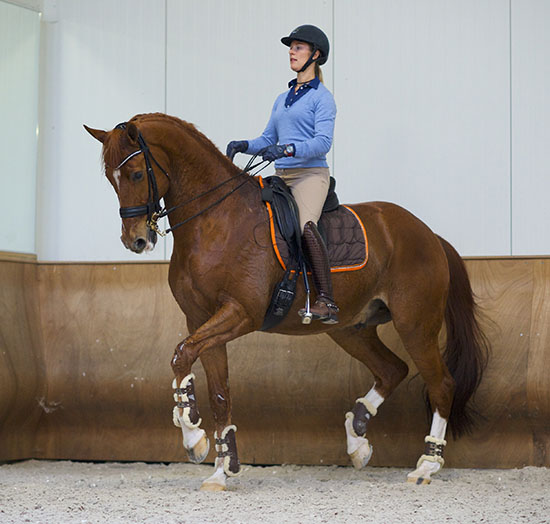
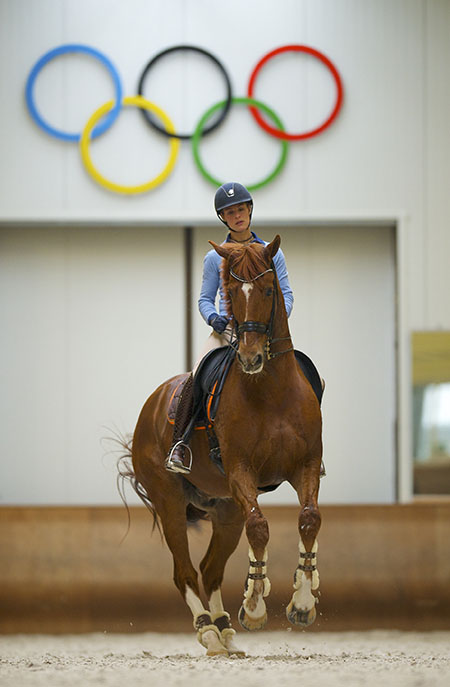 You can see the heart rate monitor that Parzival has worn since the scare in the run up to the 2013 Euros…
You can see the heart rate monitor that Parzival has worn since the scare in the run up to the 2013 Euros…
“It is the same with our body, when you train your body in the right way, then you become better in your head, your mind. When you are training the wrong way you become stiff, you injure your legs or your back, then you are not pretty in your mind, and the horse is the same. You have to train so much, or less, that the horse becomes pretty in his mind, that is the balance of training and resting and feeding, that is the circle, but in the right proportions, that is good conditioning.
Johan missed Charlotte and Valegro because he was working in Adelinde and Parzival, but he did see Helen and Damon Hill, and he was impressed: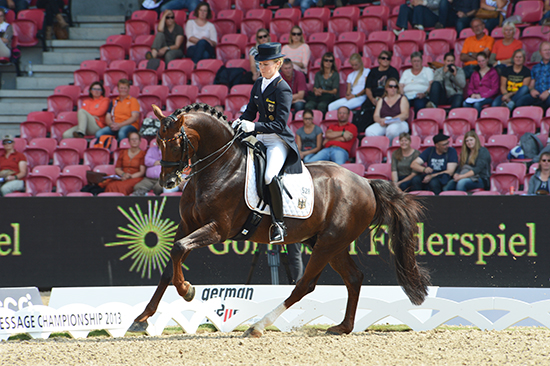
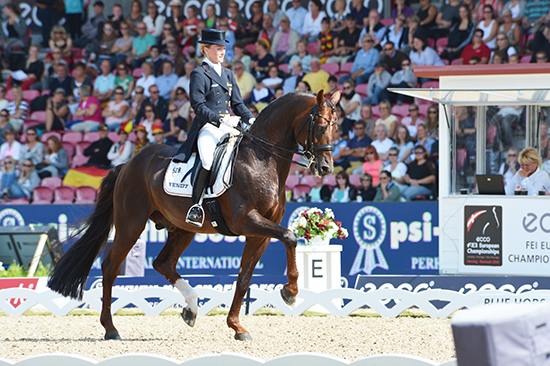
“Very good, another horse that is very loose in the whole body, long neck, very good from behind. Sometimes a little bit deep, and the piaffe is a difficult exercise for him but she does a very good job – and also this is a good example that we have to ride the poll further away. You don’t have to shorten the horse in the neck, never.”
Do you think dressage is moving in a good direction?
“I think we have turned a little bit in the right way. It is up to the judges – if the judges give high marks for a test in a hurry, then tomorrow, everybody is riding in a hurry, and if they give marks for riders going too slow, everyone is riding too slow. Everyone wants high marks, so the judges are very important, and here in Herning, the judges gave a good example that we have to ride forward from behind. And not shorten the frame and not shorten in front.”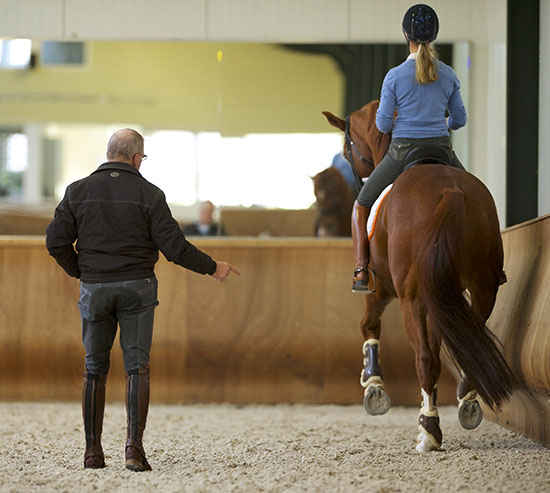



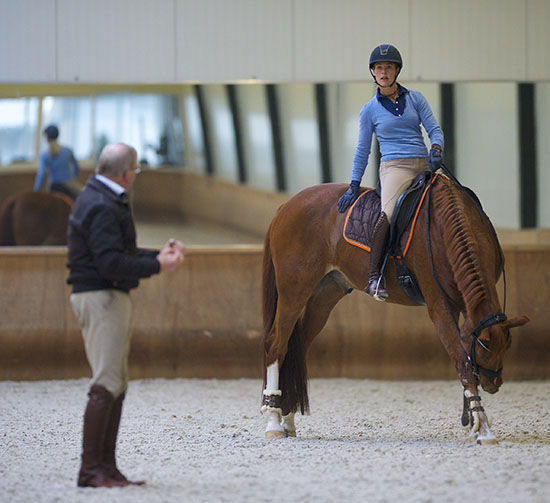
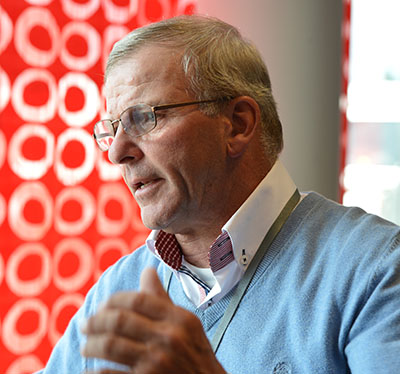
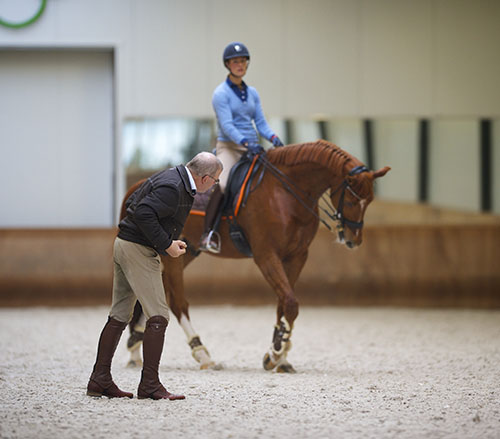
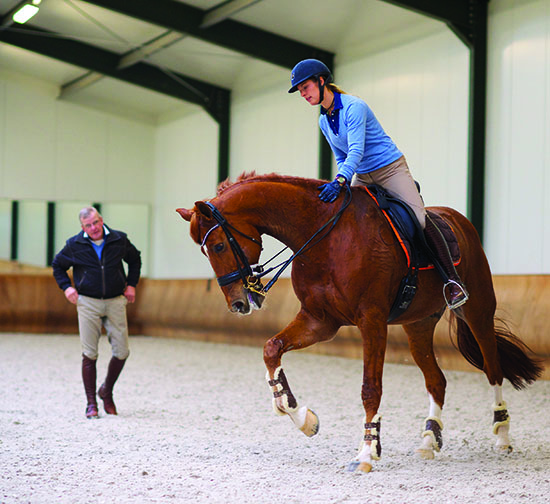
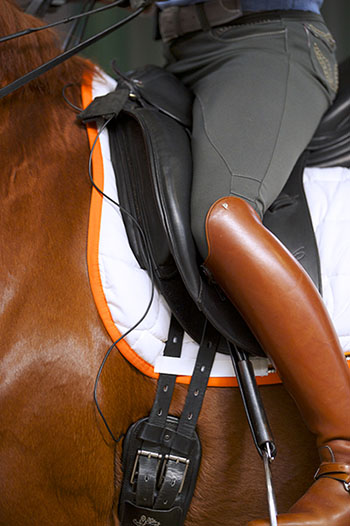
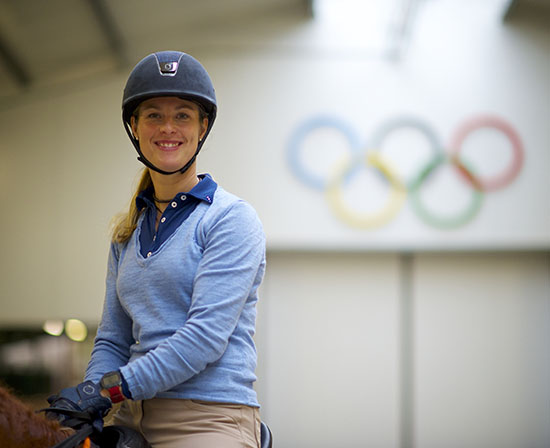
Love this article and explanation! As an amateur rider I have had a balance issue with my current horse and it has taken me a long time to break it down to asking him to wait and work from the hindlegs paying strict attention to the half halt! He has such a ‘Take Over ‘ dominant personality it took me years to start really connecting with him.